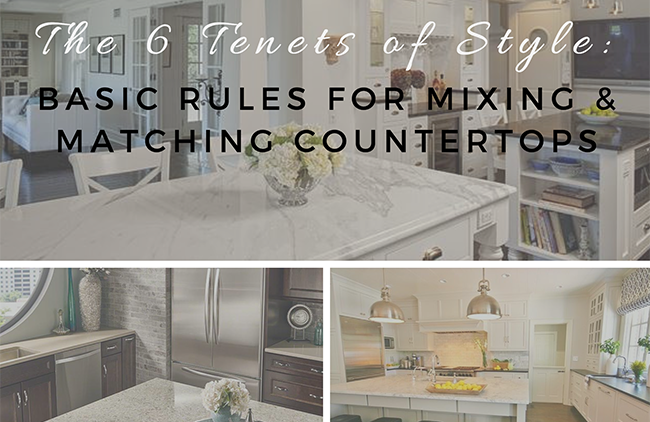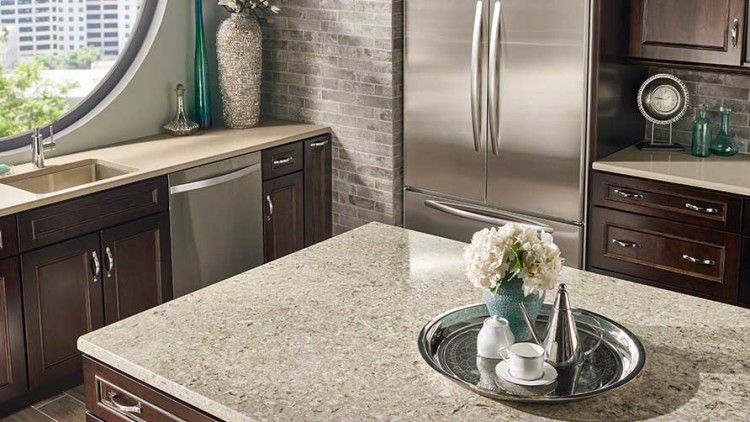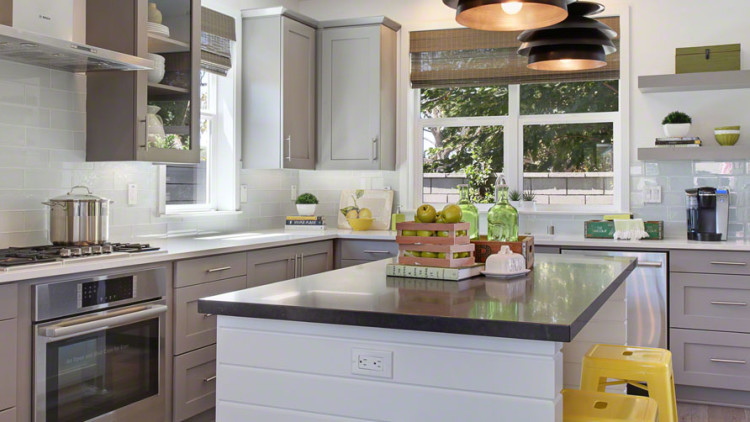The 6 Tenets of Style: Basic Rules for Mixing & Matching Countertops
Kitchen countertops should deliver loads of practicality and panache, but not all materials were created equally. When it comes to choosing countertops, take a cue from the pros: mix and match.
Mixing and matching countertops—a popular trend amongst designers and architects alike—makes for a more functional, visually appealing kitchen. Using an amalgamation of lavish and practical materials opens up a world of beauty and function—delivering a striking, unique, budget-friendly design.
To get the most mileage out of your kitchen, choose your countertops wisely. Here are a few key principles to keep in mind:
1. Practicality
Before installation, know your kitchen. First of all, where are surface spills most likely to occur? For most homeowners, spills typically happen next to a cooktop or sink, the hardest-working areas in your kitchen. In these areas, opt for a countertop material that does double-duty against spills, stains, and moisture. Durable quartz countertops are a naturally beautiful choice.
2. Functionality
Channel your inner Julia Child and imagine rolling pastry dough on a gorgeous, Carrara White countertop. It’s not just for show, though: marble’s naturally cool surface is ideal for keeping dough soft and safe from sticking to the surface (with minimal flour required). If you love to bake, consider a marble island or a smaller, marble-topped work zone.
3. Balance
For a consistent, composed look, select a focal point that’s crowned with more subtle details all around. In most homes, the kitchen island, where friends and family gather, is the main attraction. This is the place for a more luxurious, showy material to shine.
By contrast, perimeter countertops—like granite, quartz, or butcher block—are more hardworking for the everyday. In these areas, choose a material that complements your lifestyle and chosen focal point. A raised bar off the kitchen island for counter seating is another place that permits an easy transition between countertop types.
4. Flair
The kitchen is the place to put your style on display. If you crave a sophisticated, fancy feel, opt for marble—whether it’s Calacatta Gold or Carrara White. If you prefer something more contemporary, mix in a touch of granite or quartz to modernize your space. Let your unique style guide you.
5. Color
When designing with two different countertops, it’s best to connect them visually, to avoid that two-for-one, salvage-yard-special look. If you’re going for a warmer marble, like Crema Marfil Marble, opt for a quartz or granite with warm taupe or brown undertones.
If you choose a marble island with cool, gray veining, dark gray or black granite is ideal for perimeter countertops. For a well-balanced look, always contrast lightness. If your kitchen island is neutral in nature and light in color, then it’s best to choose a darker accent surface for the remaining countertops.
6. Edge
With a mixed-and-matched look, contrast and variation is key. With that said, don’t be afraid to design with more than one countertop edge profile. A marble island with a waterfall edge, for example, is a great way to extend the beauty of marble and add a modern sentiment to an otherwise traditional space.
Whether you’re after an eased, beveled, or bullnose look, the right edge should beautifully frame your countertops. For a look that’s put together and on point, choose from these 12 popular counter edge styles.
Need help visualizing how various materials look together? UMG’s Kitchen Visualizer lets you mix and match a variety of surfaces—including backsplashes, countertops, floors, and cabinet colors—so you can pair everything together elegantly.
Easier for those with an eye for design, there’s an art to mixing and matching countertops. If you need assistance, consider consulting a professional designer.
0






